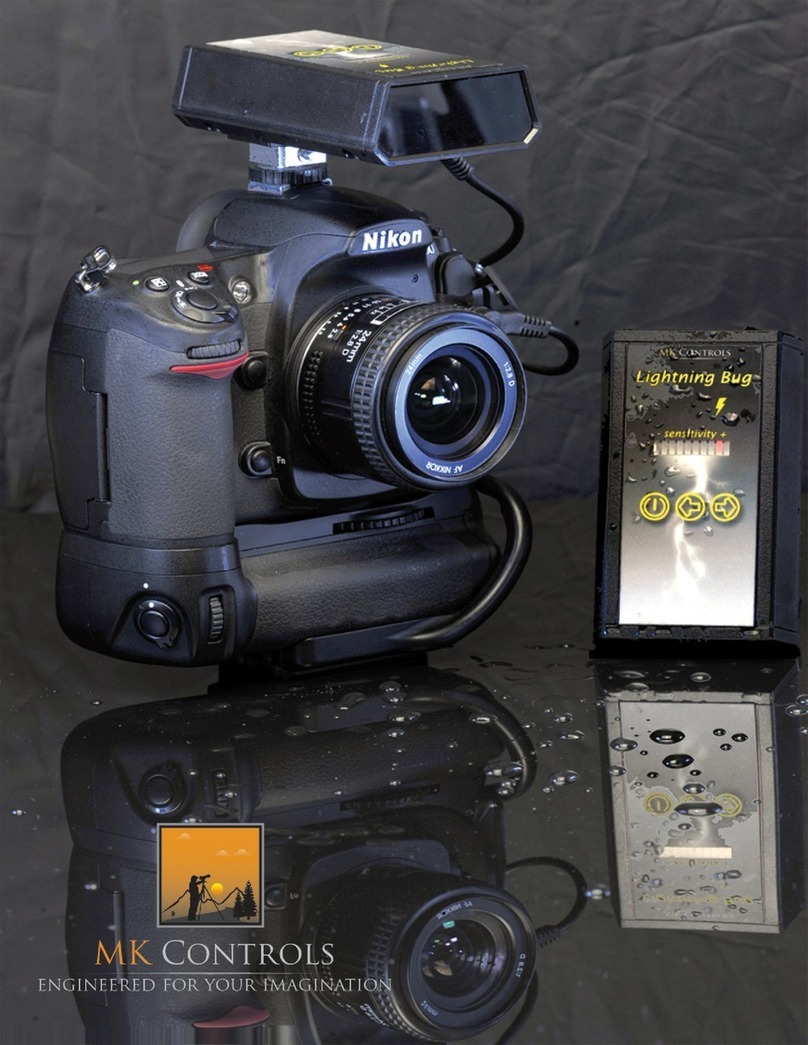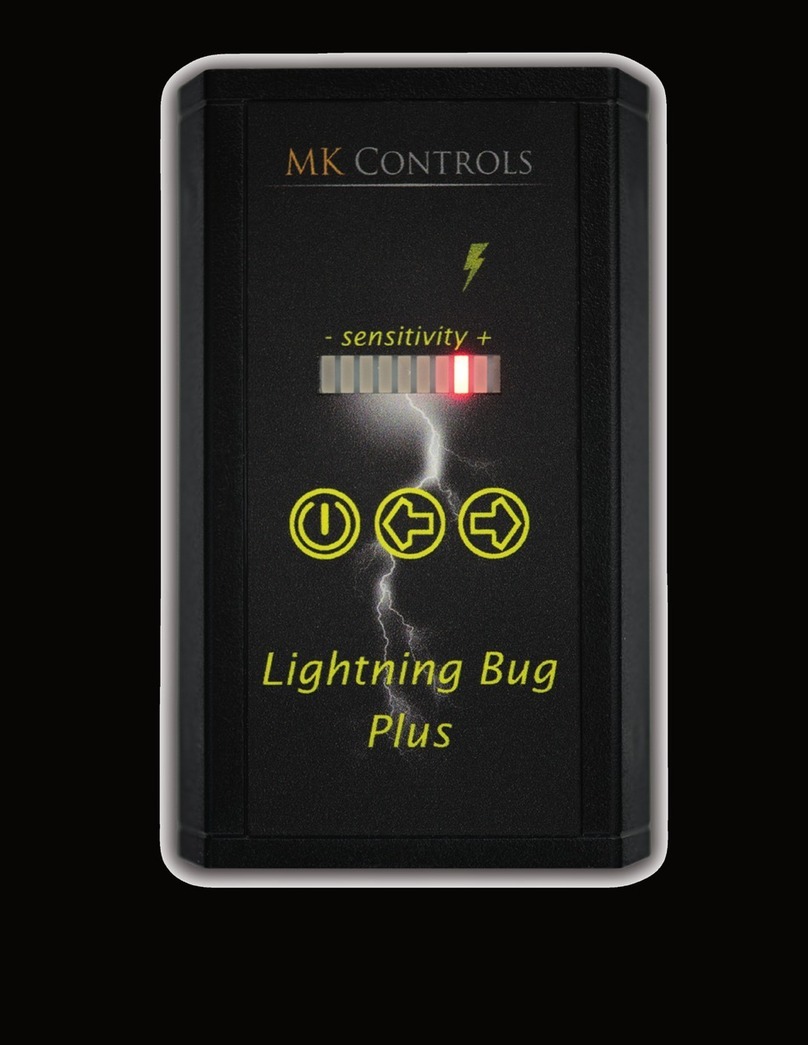
Rev: Version 3.1d May 9th, 2017 Page 4 of 27
Introduction
The Lightning Bug™ – Engineered for your imagination.
The Lightning Bug™ is based upon the science of lightning. There are two
components of lightning; the bright white flash everyone wants to capture and
the unseen infrared light that always precedes it. The Lightning Bug™ uses a high-
speed photodiode sensor optimized to sense the infrared burst that occurs just
before a lightning strike. This infrared light comes from the vaporization of air and
particles in the air. The Lightning Bug™ acts as a lookout for your camera,
watching for a change in infrared light. When a significant change of infrared light
over a very short period of time is detected, it trips the camera shutter to capture
the visible lightning bolt.
The Lightning Bug™ can also be used to take photos of fireworks, cannon shots,
virtually anything that produces a fast-acting rise of infrared light formed by a
high-temperature event.
The Lightning BugTM exclusive sensitivity adjustment circuitry allows the
photographer to customize the unit’s operation to any shooting situation. This
gives the photographer full control over when to take the picture. If you only
wanted to capture the brightest and closest lightning bolts you would decrease
the sensitivity. If you wanted to capture lightning over the city or mountains from
a long distance, just increase the sensitivity. Only the Lightning Bug™ gives you
this level of control.
The Lightning BugTM has, as standard, premium features not found in simpler
lightning detectors. The user can limit the number of possible exposures per
second to between 1 and 10. This feature allows you to capture repeated
lightning strikes successfully, up to the maximum frame rate of your camera.
When trying to capture weather events, your photography gear can get wet;
we’ve designed the Lightning Bug™ to withstand exposure to rain. The design
incorporates weather resistant soft touch buttons.





























